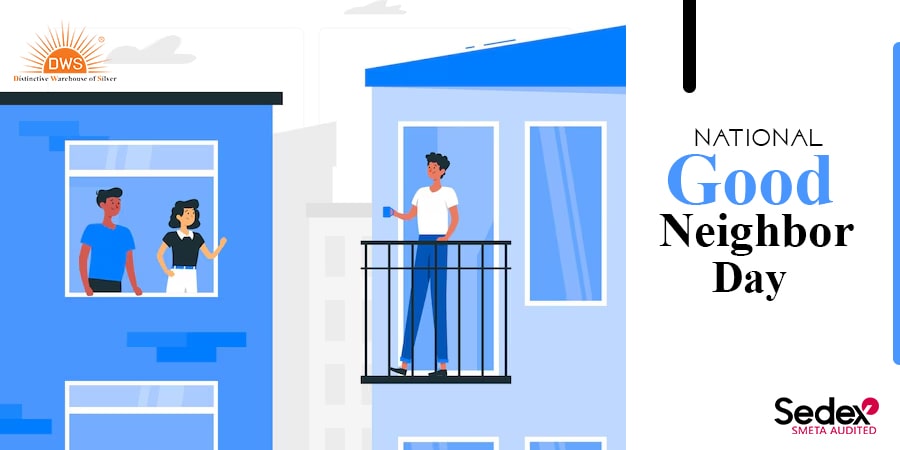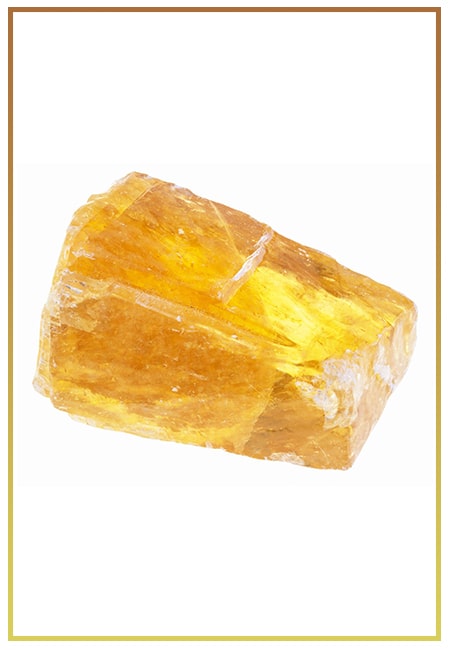- Written By Team DWS
- Festivals
- August 22, 2025
Celebrating National Good Neighbor Day: Building Bonds That Strengthen Communities
Introduction: Why Good Neighbors Matter
Imagine stepping outside your door and being greeted by a friendly smile, a wave, or even just a kind word from the person who lives next door. These small yet meaningful gestures create connections that transform a simple neighborhood into a true community. In today’s fast-paced, often disconnected society, such genuine acts of neighborly kindness can make a significant difference in our mental well-being, sense of belonging, and overall happiness.
Every year on September 28th, Americans come together to honor this sense of community on National Good Neighbor Day. First observed in the 1970s and later recognized by presidential proclamation, this day reminds us of the essential role neighbors play in our lives, whether as friends, helpers, or simply fellow citizens we can rely on.
In this blog post, we will explore the history, traditions, values, and practical celebrations of National Good Neighbor Day. We will also look at why cultivating good neighborly relationships is more important than ever—and how we can each contribute to building harmonious, supportive communities.

The History of National Good Neighbor Day
The origins of National Good Neighbor Day can be traced back to 1971, when it was first created by Becky Mattson of Lakeside, Montana. She envisioned a special day to encourage friendships, kindness, and goodwill among neighbors. Recognizing that strong communities begin with strong interpersonal relationships, she sought to inspire a nationwide effort to bring people together.
In 1978, President Jimmy Carter issued a proclamation officially designating September 24th as National Good Neighbor Day. The resolution highlighted that “the noblest human concern is concern for others,” emphasizing the moral and social duty of individuals to form positive neighborly relationships.
Eventually, the date was shifted to September 28th, where it remains to this day. While the celebration may not be as widely commercialized as holidays like Thanksgiving or Valentine’s Day, its message resonates deeply—and in many ways, it feels more needed in today’s socially fragmented world.
________________________________________
Why National Good Neighbor Day Still Matters
We live in an era of bustling digital communication and instant connectivity, yet paradoxically, many people report feeling increasingly isolated and lonely. A 2023 survey by the American Psychological Association found that nearly 30% of Americans feel they “don’t know their neighbors well enough,” while only a small fraction interact regularly with the people living nearby.
National Good Neighbor Day serves as a timely reminder of why neighborhood connections matter:
- Fostering Safety: Knowing your neighbors provides a layer of security. People who look out for each other can reduce crime, assist in emergencies, and provide mutual aid.
- Enhancing Mental Health: Studies show that friendly local connections reduce stress, loneliness, and anxiety while increasing feelings of belonging.
- Building Community Resilience: From natural disasters to unexpected life events, strong neighborhoods are better equipped to handle challenges when neighbors step forward to help one another.
- Creating Shared Joy: Whether it’s borrowing sugar, watching each other’s kids, or sharing cultural traditions, the simple joys of being a good neighbor add meaning to life.
________________________________________
The Spirit of Neighborliness in Action
Being a good neighbor can take countless forms, many of them small but powerful:
- Smiling and greeting others warmly.
- Offering to help someone carry groceries.
- Checking in on elderly neighbors.
- Sharing home-cooked meals or garden produce.
- Providing childcare assistance in emergencies.
- Celebrating milestones together, like birthdays or anniversaries.
These neighborly gestures not only address basic needs but also become symbolic of humanity’s interconnectedness. Consider the global crises of recent years—from pandemics to natural disasters—where neighbors often stepped in to fill gaps when formal systems were overwhelmed. Across the world, these unsung “good neighbors” became lifelines of hope.
________________________________________
Ways to Celebrate National Good Neighbor Day
1. Host a Neighborhood Gathering
Plan a block party, potluck dinner, or cookout where everyone can meet, share food, and enjoy each other’s company. Even a simple coffee hour can spark meaningful connections.
2. Perform Random Acts of Kindness
Offer to mow a lawn, babysit, or run errands for someone nearby. Small acts of service go a long way toward building trust and gratitude.
3. Start a Community Project
Organize a neighborhood cleanup, plant trees together, or create a community garden. Shared initiatives instill pride and strengthen bonds.
4. Introduce Yourself
If you’ve never spoken to some of your neighbors, today is the perfect day to change that. A simple introduction can open doors to lifelong friendship.
5. Support Local Resources
Encourage neighbors to connect by creating digital groups on platforms like Nextdoor or WhatsApp. These hubs can help exchange resources, announce events, and circulate safety information.
6. Show Gratitude
Write a thank-you note or surprise a neighbor with baked goods. Even the smallest token of appreciation can brighten someone’s day.
________________________________________
Being a Good Neighbor in Modern Times
While the traditional idea of “neighbor” often refers to people living next door, the concept has expanded in our global, digital world. Today, being a good neighbor can also mean:
- Supporting new immigrants in your town as they adjust to a new culture.
- Reaching out to neighbors online, where digital communities form their own version of neighborliness.
- Advocating for inclusive communities by respecting differences in race, religion, and socioeconomic status.
- Practicing sustainability so local environments thrive for future generations.
Being a good neighbor requires empathy, patience, and respect—qualities that are timeless even as society changes.
________________________________________
The Psychology of Neighborly Kindness
Why does being neighborly feel so good? Psychologists highlight several reasons:
- Reciprocity Principle: Acts of kindness often lead to a cycle where good deeds are repaid, creating positive social dynamics.
- Sense of Belonging: Feeling connected to others fulfills one of the most basic human needs, reducing loneliness.
- Oxytocin Boost: Social bonding releases oxytocin, often dubbed the “love hormone,” which lowers stress and increases well-being.
- Identity and Pride: Being part of an active community fosters identity and pride, positively affecting personal confidence.
This shows that being a good neighbor is not just moral—it is also psychologically beneficial.
________________________________________
Good Neighbors Through Different Cultures
Every culture has its interpretation of what it means to be a good neighbor:
- Ubuntu (South Africa): The philosophy that “I am because we are” places deep emphasis on community and interdependence.
- Middle Eastern Traditions: Hospitality is considered a sacred duty, and taking care of neighbors plays an important role.
- Japanese Culture: Community cohesion is highly valued, with neighbors often gathering for seasonal festivals or communal clean-ups.
- Western Contexts: Concepts such as the “block party” or “neighborhood watch” reflect structured ways communities bond.
Celebrating National Good Neighbor Day is thus not just an American custom but part of a universal human instinct—one that thrives across all societies.
________________________________________
Challenges in Modern Neighborliness
While the idea of neighborly relations sounds ideal, barriers exist:
- Busy lifestyles: People spend long hours at work or commuting, leaving little time for building relationships.
- Diversity gaps: Sometimes cultural, linguistic, or generational differences make interactions challenging.
- Technology overload: People may connect more online than face-to-face, limiting neighborhood bonds.
- Fear of intrusion: Concerns about privacy can discourage interactions.
National Good Neighbor Day invites us to overcome these barriers by taking intentional, simple steps to engage respectfully with those around us.
________________________________________
Inspiring Examples of Good Neighborliness
- During natural disasters, communities in Texas, Florida, and California have shown how neighbors rescue one another, provide food, and rebuild homes after hurricanes and wildfires.
- The COVID-19 pandemic revealed a surge of "mutual aid networks." Neighbors shopped for elderly residents, pooled resources, and supported frontline workers with meals and supplies.
- Everyday stories abound of neighbors offering tools, fixing cars, mentoring children, and sharing resources. These anecdotes remind us that kindness is not extraordinary but part of daily life when practiced regularly.
________________________________________
How to Teach Children About Good Neighbor Day
Children can grow into responsible, compassionate citizens when taught about neighborliness early on. Here are some activities for families and schools:
- Have kids create handmade cards for neighbors.
- Encourage children to help with gardening, shoveling snow, or carrying packages for neighbors.
- Share stories or books about kindness and cooperation.
- Teach simple phrases like “hello” in different languages to greet diverse neighbors.
Through these gestures, children learn that caring for others is not just a courtesy but a responsibility.
________________________________________
Neighborliness Beyond Borders
In a deeply globalized world facing shared challenges like climate change, war, and pandemics, “neighborliness” isn’t limited to the people across the street. It extends to how we treat global neighbors. Supporting humanitarian causes, practicing sustainable living, and advocating for peace are extensions of the same ethos celebrated on National Good Neighbor Day.
________________________________________
Practical Tips for Being a Better Neighbor Every Day
- Start small: A smile or greeting can begin a long friendship.
- Be trustworthy: Keep noise, pets, and property well-managed. Respect boundaries.
- Communicate openly: If issues arise, talk respectfully rather than avoiding or escalating.
- Share and borrow: Exchange items like tools, books, or food as a way to build trust.
- Volunteer locally: Offer time in neighborhood associations or local causes.
Remember: good neighborliness doesn’t need a holiday—it can flourish daily.

Conclusion: Carrying the Spirit of National Good Neighbor Day Forward
At its heart, National Good Neighbor Day is a celebration of connection, kindness, and unity. It reminds us that a world with friendlier neighbors is a safer, warmer, and more resilient one. While we celebrate it once a year on September 28th, the real test lies in carrying its values forward into our everyday lives.
Take this day to pause and reflect: How well do I really know the people living next door? Could I extend a hand of friendship? Could I lend support, or at least a smile, to make their day brighter?
By embracing the essence of National Good Neighbor Day, we reaffirm the belief that building stronger communities begins with simple kindness. And in an increasingly divided world, choosing to be a good neighbor may be one of the most radical and hopeful things we can do.
Popular on Blogs

Black Tourmaline: Meaning, Healing Properties, Fascinating Facts, Powerful Attributes, Versatile Uses, and Beyond
September 05, 2023 / BY Team DWS
Black Tourmaline, also known as Schorl, is a highly revered crystal with incredible metaphysical properties. It derives its name from the Dutch word "turamali," meaning "stone with ..

Carnelian Stone: Meaning, Healing Properties, Power, Facts, Color, Uses and More
December 26, 2023 / BY Team DWS
Carnelian is a vibrant and captivating gemstone that holds a plethora of meanings, healing properties, and powers. Its warm and fiery energy makes it a popular choice among crystal ..

Citrine: Exploring its Meaning, Healing Properties, Fascinating Facts, Powers, Versatile Uses, and Much More
November 18, 2023 / BY Team DWS
Citrine, with its warm golden hues, has captured the attention and imagination of people for centuries. This beautiful gemstone, commonly associated with wealth and prosperity, hol ..

Black Onyx: Unveiling the Meaning, Healing Properties, Fascinating Facts, Powerful Attributes, Versatile Uses, and Beyond
July 25, 2023 / BY Team DWS
Black Onyx, a striking gemstone admired for its deep black hue and elegant appearance, has captivated people for centuries. In this comprehensive guide, we will delve into the mean ..

Unveiling the Mysteries of Turquoise Stone: Exploring its Meaning, Healing Properties, Power, Facts, Color, Uses, and More
December 05, 2023 / BY Team DWS
Turquoise, with its captivating blue-green hue, has been adorning jewelry and artifacts for centuries. This striking stone has a rich history, rich symbolism, and a plethora of int ..

The History Behind The Popularity of Red Agate
December 23, 2022 / BY Team DWS
An Agate is a type of magma rock that takes many years till it is washed out naturally into the water. And that is the reason this stone has elements of water. This beautiful stone ..

Bloodstone: Unveiling the Meaning, Healing Properties, Facts, Powers, Uses, and More
August 21, 2023 / BY Team DWS
Bloodstone, with its captivating deep green color with specks of red, is a mesmerizing gemstone that has fascinated civilizations for centuries. It possesses unique healing propert ..

Plan a Perfect Valentine's Week with Our Valentine Week List 2025
January 22, 2024 / BY Team DWS
Valentine's Day is undoubtedly the most romantic day of the year, but we believe that one day is just not enough to express your love and make your partner feel special. That's why ..


